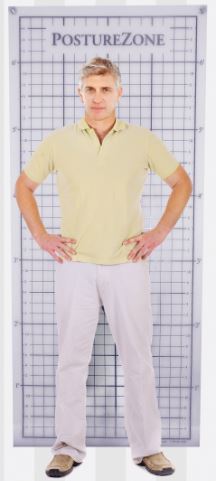Why You Must Start Taking Posture Pictures
Posted by Dr. Steven Weiniger on 30th Nov 2022
5 Ways Posture Pictures Beat X-rays
Posture pictures are a better choice for many purposes than X-rays as a tool for practitioners who focus on pain, posture, function or motion in practice. In my personal practice experience, in the past my treatment was guided by x-rays far more than it is today, an experience shared by many physicians who tell me they rely far less on radiographic findings.
Xrays are still invaluable to screen for osseous pathology, rule out red flags or observe disc degeneration or other level specific tissue challenges, but MRIs are often a better (though more expensive) diagnostic tool. On the other hand, Posture Pictures are inexpensive, and actually more useful than X-rays in other significant ways:
1. Observing Global Biomechanics of Posture, including Observations by PostureZone
Structural screenings, especially looking at the 4 weight bearing zones of posture, is easier from a whole body gridded image than a specific region seen on an x-ray. If you believe posture is important, then carefully examining a photo of posture gives you the opportunity to correlate symptoms, exam, palpation and other findings with their overall body mechanics. And tie it all together in a narrative, an explanation of the problem, which creates value for reason #2.
2. Communicating to Patients
I've shown many people the curves and spurs of their spine. Early in my career that was how DCs explained to a patient what was wrong. To my frustration, many of them didn't care. Patients then and now wanted to know "Can you help me?" Think about this: When someone sees a photograph of an event they attended with several people around them, who do they look at first and the hardest? Right- THEMSELVES. People are wired to look at themselves, and are interested when you narrate the connection between their problem and their body with a Posture Picture analysis and their objective findings. A report analyzing their posture (easy with modern software) is a reminder to help them understand and retell that narrative, which creates value for reason #3 and #4.
3. Demonstrating Progress
People are engaged and want to see changes when you retake Posture Pictures, at the end of phase of care, or when you compare this quarter’s posture picture to prior ones. On the other hand, they are moved to action if they have not been compliant with care and self-care instructions and thus the follow up photo shows measurable decline.
4. Documenting Progress
Providing an assessment report with visual proof for insurance carriers, referring physicians, attorneys and other third parties of pre and post care Posture Pictures of a patient can show change and demonstrate real value. Even to a skeptical claims examiner. It can also earn you well-deserved credibility as positive results are obvious, leading to a higher level of trust and more referrals. For anyone who wants to grow your chiropractic practice this provides a fantastic tool.
5. Affordable Expense with no Radiation Exposure
Posture Pictures only require a posture grid or posture chart, a camera (or cell phone camera), and if you want to provide reports, PostureZone software or app is handy. With research studies claiming little to weak clinical benefit for many x-rays, insurance guidelines have diminished the value of X-rays in the evidence based (or biased) care communities. While adherents of some techniques strongly disagree, everyone agrees it makes sense to minimize exposure and unnecessary expense, as well as improve patient's understanding of their own body, and engagement in care.



